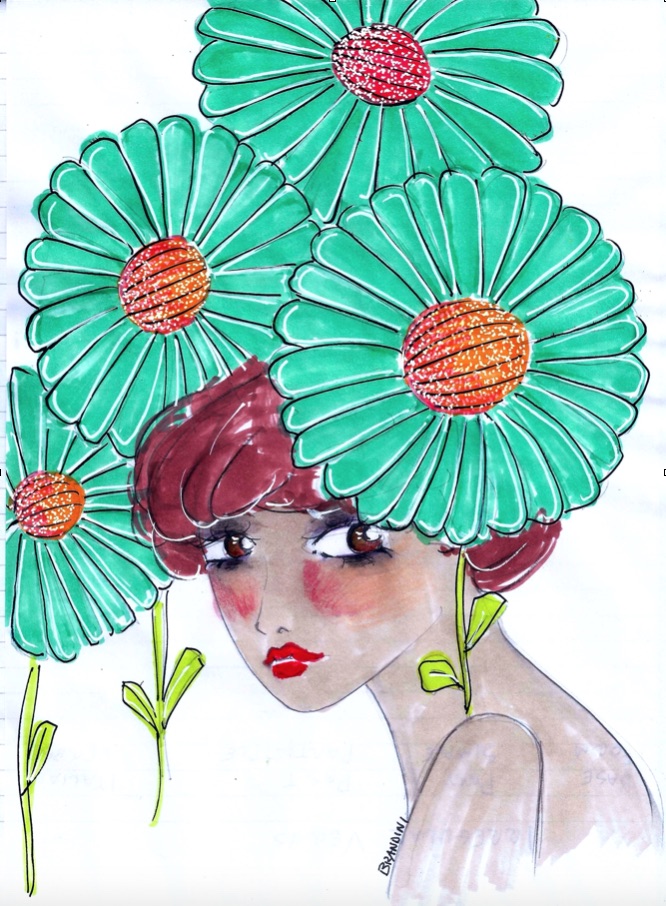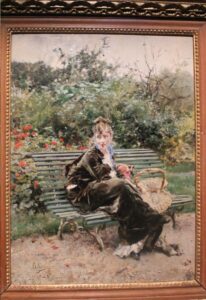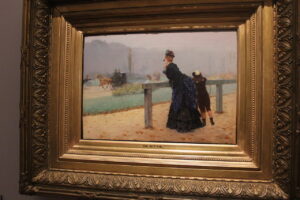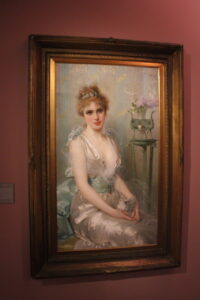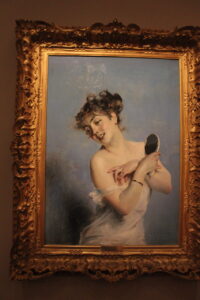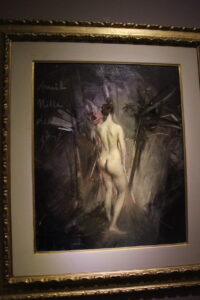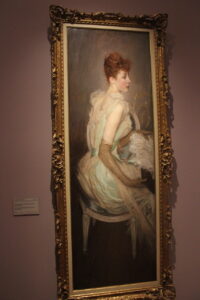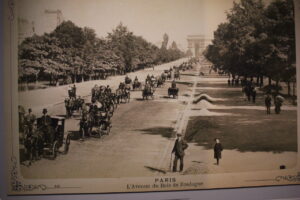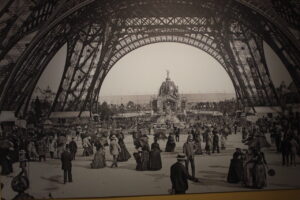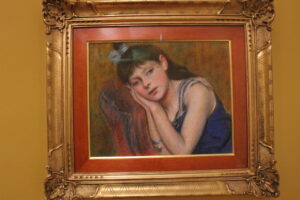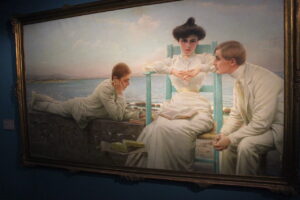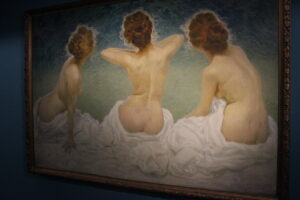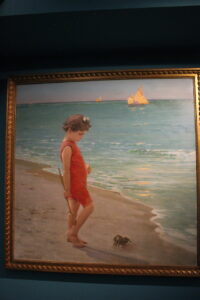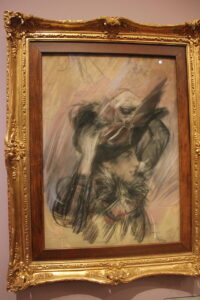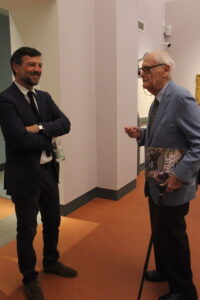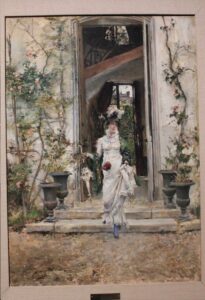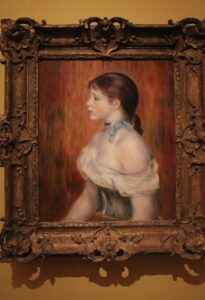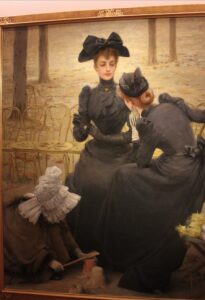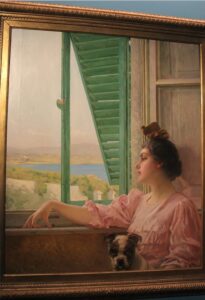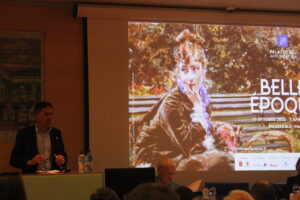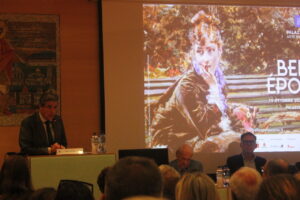Poster in the Belle Époque facade of Palazzo Blu
Claudine by Beatrice Brandini
Yesterday I was fortunate enough to preview the exhibition BELLE ÉPOQUE at Palazzo Blu, open from today until April 7, 2026. It’s a truly wonderful exhibition that I recommend to everyone, not just art lovers, but to anyone who loves and seeks beauty.
Giovanni Boldini On the Bench in the Bois, 1872. Private collection.
Giuseppe De Nittis At the Bois, 1873. Private collection.
From October 15, 2025, to April 7, 2026, the Palazzo Blu Foundation presents the exhibition Belle Époque, curated by Professor Francesca Dini and produced in collaboration with MondoMostre and with the contribution of the Pisa Foundation.. A fascinating journey into Europe’s most elegant era, told through masterpieces from major Italian and international museums—including the Musée d’Orsay, the Louvre, the Philadelphia Museum of Art, the Uffizi Galleries, the Museo e Real Bosco di Capodimonte, and Palazzo Te in Mantua—as well as private collections never before exhibited to the public.
Vittorio Matteo Corcos, The Elegant Dress, 1894. Private collection.
Giovanni Boldini, Young Woman in Deshabillé. Private collection.
The Belle Époque is the historical period that spans the years from 1871, the end of the Franco-Prussian War, to 1914, the beginning of the First World War. These were years of great economic, social, and above all cultural transformations—always closely intertwined—and of great technological advances.
Giovanni Boldini, Nude from the Back, 1894. Private collection.
Giovanni Boldini, Portrait of the Countess de Leusse née Berthier, 1890. Private collection.
Photographs of Paris in those years
The exhibition is divided into nine thematic sections, with a constant focus on Paris. In the City of Light, a revolutionary artistic movement developed that expressed itself through painting, sculpture, fashion, and advertising. Paris was a symbolic city, a crossroads of Europe in constant turmoil. It is estimated that in those years it already boasted two million inhabitants (Rome had approximately one hundred thousand).
Federico Zandomeneghi, Samnolence, circa 1895. Private collection.
Vittorio Matteo Corcos, Reading by the Sea, 1910. Private collection.
But Paris, alongside its technical and euphoric process, which found its perfect witness in the bourgeoisie, also signified social inequalities, war wounds that had never been metabolized.
Giorgio Kienerk Youth, 1902. Pavia, Civic Museum.
Vittorio Matteo Corcos The Coccolì, 1915. Private collection.
On display are some masterpieces never before exhibited, with a particular focus on those known as the “Italiens de Paris”, such as Zandomeneghi, Vittorio Corcos, De Nittis, and Boldini.
Giovanni Boldini Girl Pinning Her Hat, 1893. Private collection.
The highly esteemed President of Palazzo Blu, Cosimo Bracci Torsi, at a press conference.
Three Italians are particularly prominent in this exhibition: Giovanni Boldini, undoubtedly its most worldly interpreter; Giuseppe De Nittis, its most delicate and sensitive chronicler; and Federico Zandomeneghi, closely linked to the Impressionist tradition and a perfect witness to bourgeois daily life. Both found a home in the French capital.
Giovanni Boldini, Berthe Going for a Walk, 1874. Private collection.
Auguste Renoir, Young Girl in a Blue Robe, 1888. Lyon, Musée des Beaux-Arts de Lyon
The BELLE ÉPOQUE exhibition aims to highlight the contribution of Italian artists active in Paris during those years. As curator Francesca Dini explains, “This exhibition represents a journey through European cultural history, through Italian artists who have transformed their painting into an international language, without ever forgetting their roots. It’s not just a collection of ‘beautiful masterpieces’, but an attempt to give voice and context to a crucial period, restoring depth to a movement often trivialized by its own aesthetic seduction.”
Vittorio Matteo Corcos, Governesses in the Champs-Elysées, 1892. Carpi, Palazzo Foresti Collection.
Vittorio Matteo Corcos, The Painter’s Daughter at the Window, 1909. Courtesy Phidias Antiques
The Belle Époque was much more than a happy era. Those years influenced the entire world, representing a moment in which art, scientific progress, and positivist and progressive thought were fundamental to the future. Paris, despite recovering from a military defeat, managed to transform itself into a symbol of modernity, thanks in part to the contribution of international artists, who, like our Italians, made a significant contribution to the art of those years.
Images from the press conference with the mayor of Pisa, Michele Conti, and the CEO of MondoMostre, Simone Todorow Di San Giorgio.
BELLE ÉPOQUE,
October 15, 2025 – April 7, 2026,
Pisa, Palazzo Blu
Good life to everyone!
Beatrice



